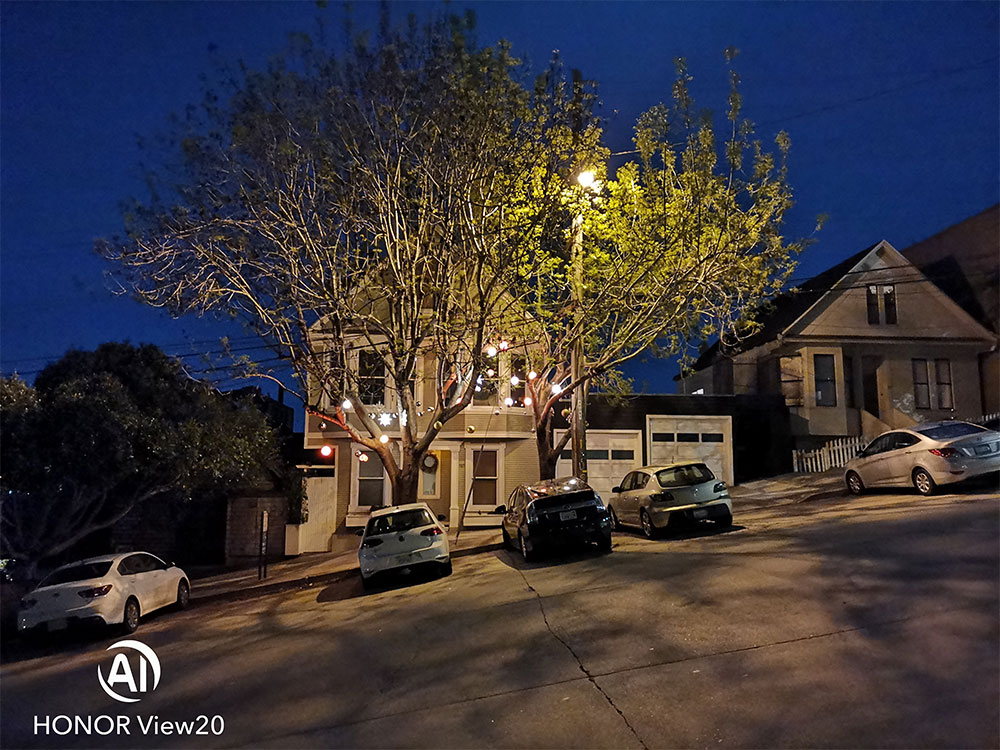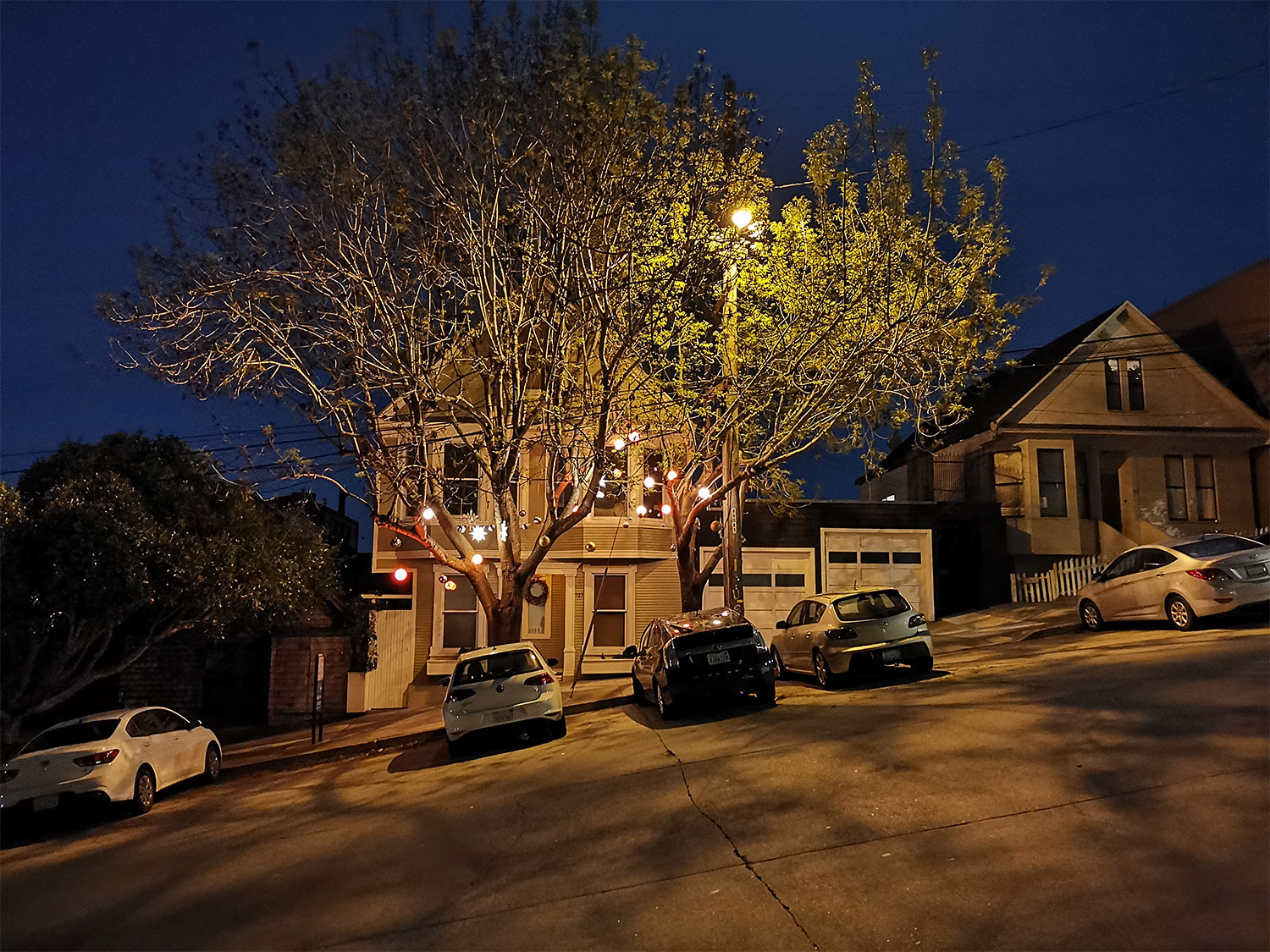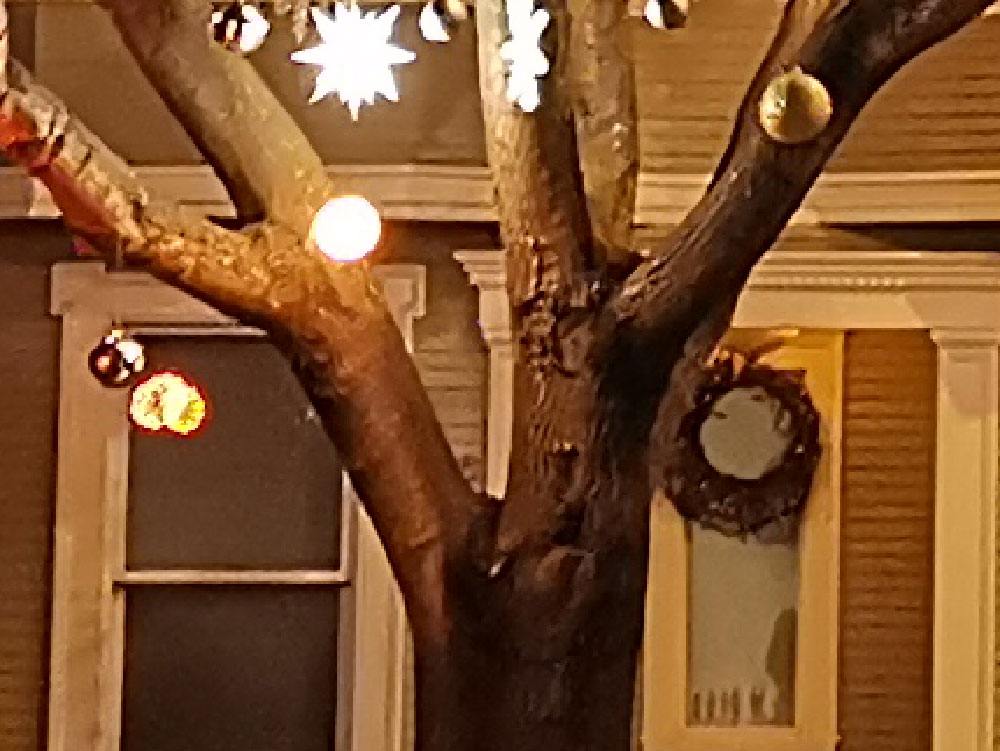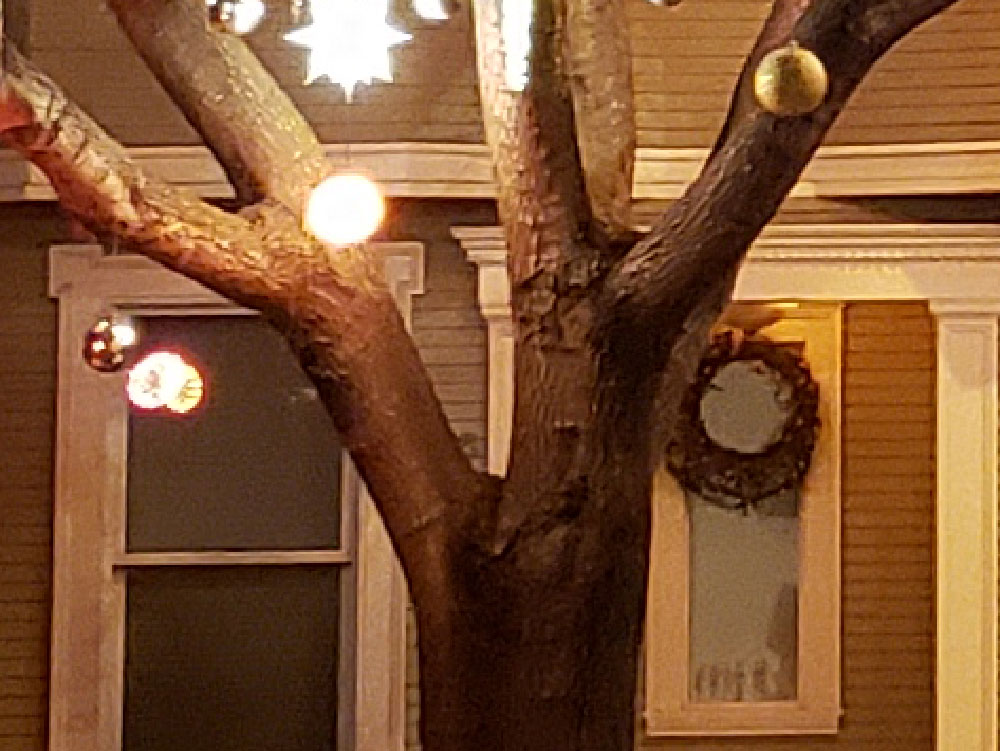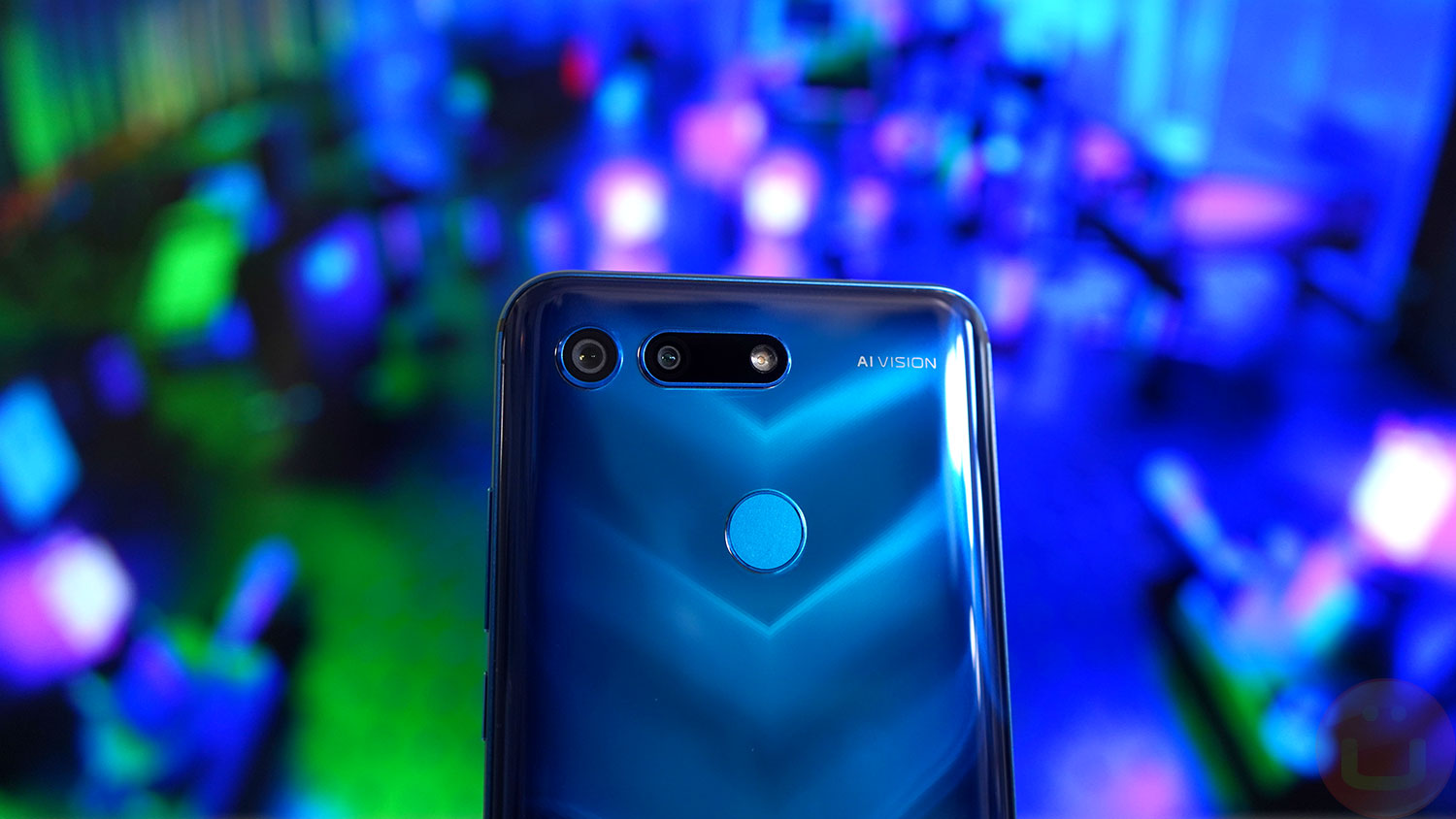
The Honor View 20 was the first phone to launch in December with the new Sony 48-Megapixel IMX586 camera sensor, which includes the Quad-Bayer technology.
The Huawei P20 Pro and Mate 20 Pro 40 Megapixel sensors also had Quad-Bayer, a technology that helps take HDR photos or videos with less ghosting effects. Let’s dig a deeper into the Honor View 20 camera Uber IQ Camera tests samples.
Camera specifications and hardware score
- Rear Camera System (1 camera)
- Primary: 26mm, f/1.8, 48 Megapixel (0.8μm) Quad-Bayer, PDAF
- Zoom: N/A
- Ultrawide: N/A
As you can see, Honor has spent its hardware budget in a powerful single-lens camera system, assisted by a ToF (time of flight) depth sensor for Bokeh effects. The same technology could help with Augmented Reality applications as well.
Although it does not have a dedicated zoom lens, the Honor View 20 is able to do very well in zoom tests, probably because Honor is using a sensor-crop lossless zoom technique.
Image Quality Analysis
Important: let’s clarify some terminology we’ll be using:
- “image processing”: software work that improves the image data quality
- “image filtering”: software work that changes the style (aesthetic) of the photo.
- “context photo”: a great approximation of what we see
-
- Including how dark the scene actually is
- Only to provide the context of the shot.
- Not a quality benchmark
-
A note about the Uber IQ Camera acore: our camera scoring system is based on four “Pillars” or sub-scores that provides much-needed nuance: day, night, zoom and ultrawide photography.
Daylight Photography: 178
It is important to note that our scores reflect the shots in auto-mode (12MP), which is what people use all the time.
However, The Honor View 20 has two special, but less flexible, 48-Megapixel modes: 48 MP and 48 MP “Ultra-clarity” in which you cannot zoom, among other things. We will mention these modes later, but they do not generate points in our score which is designed to track the most common use cases.
Daylight photography is one of the Honor View 20 highlights. With a score of 178, it ranks just below Huawei’s Mate 20 Pro, a much more expensive handset. Honor is a subsidiary of Huawei and shares some of the camera software and tuning.

Context photo: what the scene looks like
Below, we take a closer look at a cropped section. You can see that the View 20 and Mate 20 Pro cameras have very similar photo characteristics, with small differences: the View 20 photo is a bit more detailed but noisier (grainier), while Mate 20 Pro has a little bit fewer details (10MP photo vs. 12MP) and stronger denoising. The noise difference can be seen on the yellow and blue houses, and on the tree in the middle.

Context photo crop: what the scene looks like
Note how the Mate 20 Pro has lost the sidings “fish scale” texture and the roof shingle details on the blue house which appear flat. The View 20 manages to keep a hint of the textures. Below, we compare with the iPhone XS camera, which manages to salvage a bit more details, and has better colors hues out of the box. The iPhone XS does a good job of preserving details and at the same time has much less noise (easy to spot on the houses facades).
The scene below is another example of a challenging scene, with HDR and lots of details. If we crop into the lower-right of the scene, it’s easier to see the differences of outcomes between different cameras.

Context photo: what the scene looks like

Context photo, cropped
On the Honor View 20, the trees are darker than in real life (see context), because the HDR didn’t pick up that detail. You can see that the luminosity of the trees is better captured on the iPhone XS (compared with the context shot). The iPhone also preserves the house’s texture and the cables in the middle better. The colors also look natural and not too contrasted.
48MP and 48MP Ultra-Clarity Modes
When you switch to these modes, the camera uses the full sensor resolution instead of merging pixels quads into a 12MP photo. To understand why this mode exists, read our article about Quad-Bayer sensors, which is a key technology in the View 20’s sensor.
The regular 48MP mode can generate sharper details in a scene (see below). That’s particularly true for edges, trees and other high-frequency patterns that will be challenging to a lower-resolution sensor. However, the below shot shows that the “texture” of certain materials such as the blue house “fish scale” siding still eludes the camera.
48 MP Ultra-Clarify is a special long-exposure mode in which the camera is going to capture a large number of photos (potentially dozens) during a 4-6 seconds shot, before combining them into a final image. This is called multi-frame photography (or stacked photography) and is a concept similar to Google’s Night Sight, or Huawei’s Night Mode.
If you are willing to wait, this is the mode that will capture the best details and texture. I suspect that using multiple shots, Honor is able to circumvent some of the caveats of the Quad-Bayer quad-RGB pixel layout to get more details.
By accepting to lengthen the exposure time by ~100X or more, it is possible to get noticeably better image quality. Long-exposure is undeniably a great tool, but our experience is that people don’t switch modes very often. The extra details are visible, and whether it’s worth the wait during the capture, that’s up to YOU to decide. We can clearly see that UC improves textures significantly.
Let’s compare the two 48MP modes now. As you can see, Ultra Clarity not only fetches better details, but also better HDR as seen on the upper-left vegetation.
And for good measure, let’s show how good it is compared to the iPhone XS. Obviously, if you’re going to increase the exposure time by ~100X, we’d expect to get something out of it! It can be a great tool for specific scenes, especially with a tri-pod. However, most people aren’t going to use it often.
Perhaps Honor could find an intermediate solution by incorporating image-stacking as much as possible in the auto mode, instead of asking users to switch modes to fully enjoy the benefits of the 48MP sensor. There are different strategies to consider.
Low-Light Photography: 174
In low-light, we found that the Honor View 20 places itself firmly ahead of phones like the OnePlus 6, which cannot challenge the View 20 at all. However, it falls short of the OnePlus 6T and the Pixel 3 (read Pixel 3 camera review), two prominent low-light phones. The Galaxy S10 and Note 9 camera remain at the top of our Night photo ranking. Don’t miss our Galaxy S10 Camera Review.
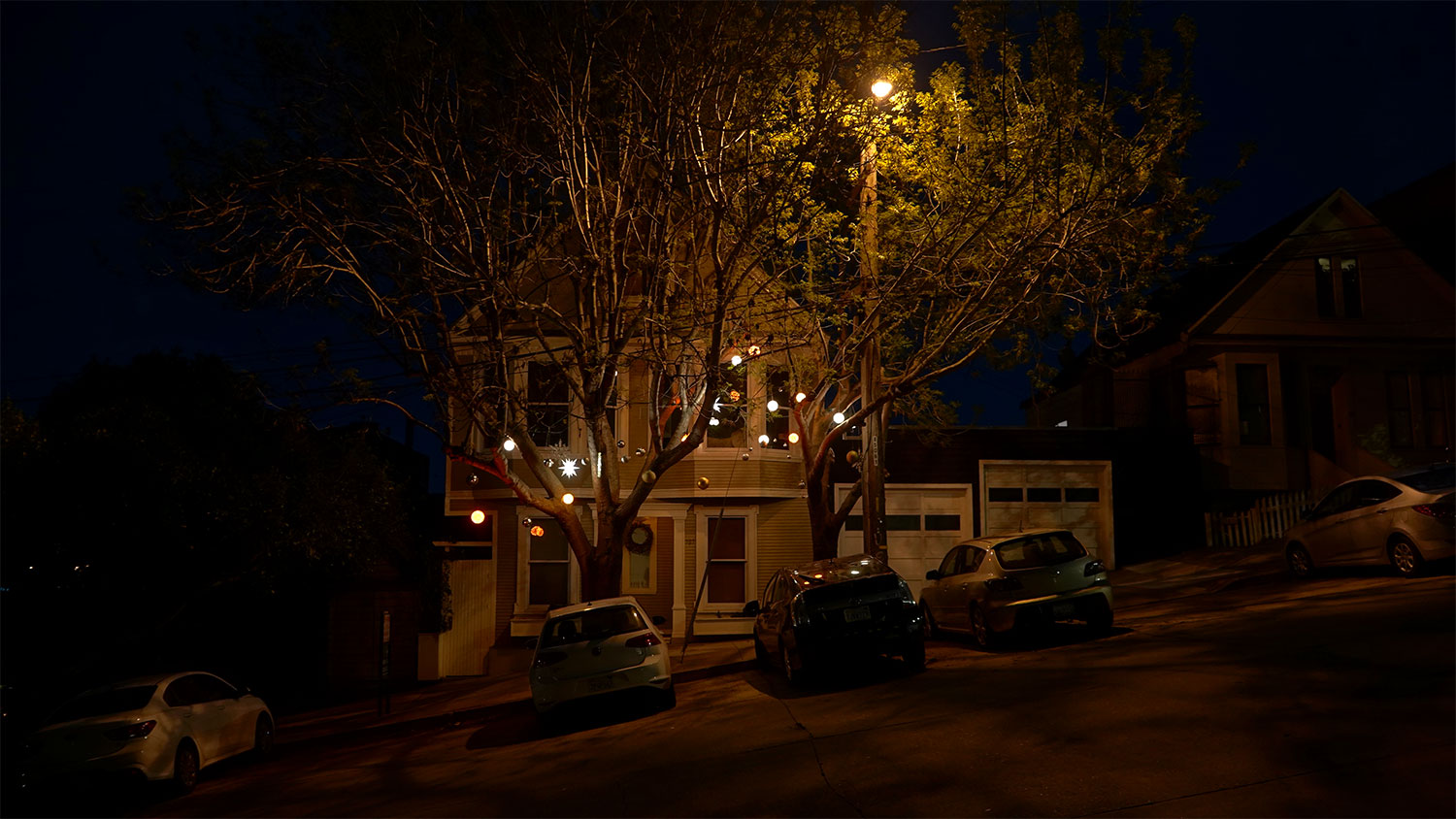
Context Shot, what the scene looks like
In the above comparison, we check how well the Honor View 20 does against the Mate 20 Pro. You can see that the Mate 20 Pro’s colors hues are more on-point with the actual scene (context photo). Even though the Honor View 20 does very well in its price category, we needed to check how it competes against high-end cameras.
Below, a cropped view confirms that the Mate 20 Pro has indeed more details, which seems normal given that it is Huawei’s current top camera phone, until P30 comes out. The Mate 20 Pro has less noise, and more details.
Below, we compare the Honor View 20 with the Galaxy Note 9, which performs very similarly to the new Galaxy S10/S10+. The level of details and the color accuracy (vs the context photo) is even higher.
In its price category (~$480 in China), the Honor View 20 is very strong. For example, if we compare it with the OnePlus 6, we can see that the View 20 does much better in this 0.5LUX low-light shot. Look at the details in this cropped image:
However, the OnePlus 6T camera is a bit better with noise and details. The comparison below shows that the Honor View 20 has coarse noise that is more visible to the naked eye.
And yes, the View 20’s low-light photo is “brighter”, but this is because of an image-filtering style, and not fundamentally better image data. We talked about this in our Brighter Is Not Always Better article. As an illustration, a simple Level filter makes the OnePlus 6T photo just as bright. You can do this in a few seconds in the Gallery app.

OnePlus 6T, filtered to be brighter
The Honor View 20 represents a big step forward in the ~$480 low-light performance, it’s undeniable. It would be unreasonable to think that it would beat Huawei’s most expensive handsets, but Honor has done a good job of getting it as close as possible.
"A BIG STEP FORWARD IN THE ~$480 LOW-LIGHT PERFORMANCE"Zoom Photography: 83
The Honor View 20 performs very well for a single-lens camera when it comes with zooming. It can compete with many recent phones with a 2X (~52mm) optics and performs slightly better than LG V40 and close to the HTC U12+. For older 2X zoom like the iPhone 7 Plus, the Honor View 20 can handily outpace them, thanks to its better camera module and extreme resolution.

Context: what the scene looks like
The above comparison looks like the zoom performance against the Pixel 3. Both phones don’t have a dedicated optical zoom, but you can see that the Honor View 20 performs much better, with more details and less image-filtering.
Even when compared to the iPhone XS, which has a dedicated 2X zoom lens, the View 20 does very well. That said, the iPhone XS has better colors, but this is an instanced that shows how the 48 MP sensor can help. Most likely, Honor is using a sensor-crop lossless zoom technique and the Honor View 20 can go head-to-head with some 2X optical zoom cameras.
"THE HONOR VIEW 20 CAN GO HEAD-TO-HEAD WITH SOME 2X OPTICAL ZOOM CAMERAS"Not surprisingly, It won’t be able to match the 80mm optical zoom from phones such as the Huawei Mate 20 Pro and P20 Pro. Oppo is also coming with a 160mm optical zoom that looked really good at MWC.

Context shot, what the scene looks like when zoomed in
Ultrawide Photography: N/A
Unfortunately, the Honor View 20 isn’t equipped with an Ultrawide camera. It’s understandable since its price of ~$480 in China would make it very difficult to compete at the same level as phones such as the LG V40, Huawei Mate 20 Pro or Galaxy S10.
Conclusion and Uber IQ Camera Score
| Uber IQ Camera | Sub-scores |
|---|---|
| Day | 179 |
| Night | 174 |
| Zoom | 83 |
| Ultrawide | N/A |
With an Uber IQ Camera score of 150, the Honor View 20 places itself not far behind the Google Pixel 3 camera, but their photography styles are very completely different.
The Honor phone has more image-filtering than Pixel 3, and at night, it makes everything very bright, with white balance steering towards white. On the contrary, Pixel 3 will often exaggerate colors and contrasts, which is a style that has proven to be popular. You decide which you prefer.
Honor’s move to this 48MP large sensor is bold and manages to make the Honor View 20 the best zoom camera we’ve tested in the Premium category.
There is a huge gap between the price in China and the one in Europe. At the moment, there’s no U.S import, and therefore no official U.S price. Depending on how much you can get it for, the value profile changes drastically from “excellent” (~$480 in China) to “you have other options” (~600 Euros in Europe). These phones are more about value than absolute performance.
Filed in . Read more about Android, Camera Benchmarks, Editorspick, Honor and Mobile Camera Reviews.







